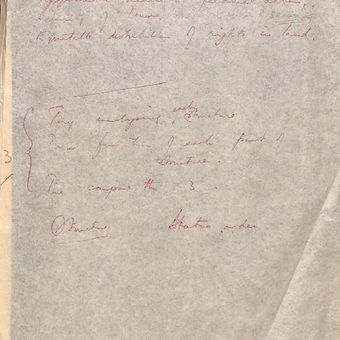Connect with The University of Auckland Library
Contact this content partner to get more information about this item.
Spatial Symbolism, Cultural Categories And Historical Process In New Caledonia, By B. Douglas, P 383-416 (Journal of the Polynesian Society: Written On The Ground)
- Description:
- Volume 91 1982 > Volume 91, No. 3 p 383-416 ; The description and analysis of symbolic systems are major concerns in anthropology, though not, of course, new ones. In 1930 Maurice Leenhardt described the symbolism of the traditional Melanesian habitat in New Caledonia and he subsequently integrated these ethnographic data into his more abstra...
- Display date:
- 1982
- Location:
- Polynesia
- Collections:
- Journal of the Polynesian Society
- Content partner:
- The University of Auckland Library
- Availability:
- Not specified
-
Copyright status: All rights reservedFind out more about what you are able to do with this itemThis item is all rights reserved, with means you'll have to get permission from The University of Auckland Library before using it. For more information, please see our use and reuse page.More informationThe University of Auckland Library has this to say about the rights status of this item:
http://www.jps.auckland.ac.nz/conditions.php
What can I do with this item?Non-infringing useNZ copyright law does not prevent every use of a copyright work, and this item may be hosted by an international institute or organisation. You should consider what you can and cannot do with a copyright work.No sharingYou may not copy and/or share this item with others without further permission. This includes posting it on your blog, using it in a presentation, or any other public use.No modifyingYou are not allowed to adapt or remix this item into any other works.No commercial useYou may not use this item commercially.
Welcome and warm Pasifik greetings
The information on this site has been gathered from our content partners.
The names, terms, and labels that we present on the site may contain images or voices of deceased persons and may also reflect the bias, norms, and perspective of the period of time in which they were created. We accept that these may not be appropriate today.
If you have any concerns or questions about an item, please contact us.

